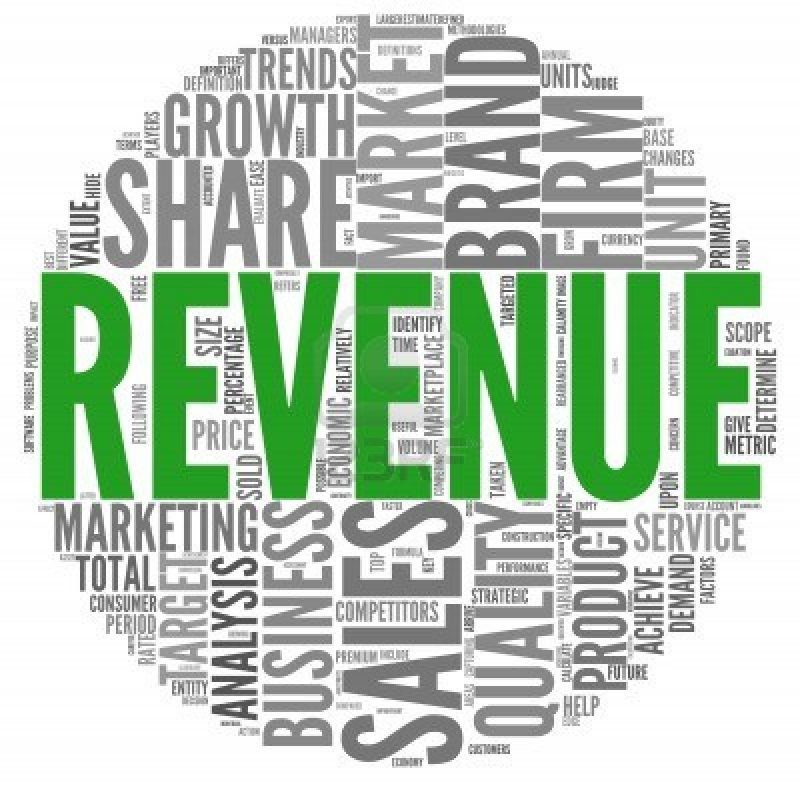There are times in business when it is actually more important to look at revenues and not profit. Whilst profitability is important in determining the value of a company, revenues also play a key and sometimes even more important role in determining the value of a company.
That is why when a company reports a drop in revenue, its share price sometimes tank despite also reporting profitability growth. So, when are revenues actually more important than profits and what are the implications?
When revenue is growing
A loss making business can sometimes be looked at as one with intrinsic value provided revenue is growing. This is because a growth in revenue indicates the losses it is experiencing may be temporary due to high operating cost or interest expenses or taxes or a combination of all. In this instance, investors view the company as one that requires major restructuring of operations rather than one that needs to shut down.
When cost is going down
As mentioned above, sometimes a business can rack up losses because it has failed to reign in on cost. However reining in on cost typically takes time and does not immediately translate to reversing losses. So whilst cost cutting is the right step in the right direction, it must also show that this move has not impacting negatively on revenue. Revenue must also be seen to be growing or at least stable in the near term.
[Read Also: Elo Umeh named 2019 B2B SME CEO of the year]
When the business is investing in its product
Some products take time to break-even and during this tutelage period can run up losses. The company may be spending so much on research and development; marketing and promotional cost all in a bid to ensure its product is noticeable and garnering market share. In such cases, what you focus on is revenues and not necessarily profits. An increase in revenue shows that consumers like the products resulting in higher demand which sooner rather than later turns to profit.
When barrier to entry is low
Some industries are synonymous with very few competitors. It is either the owners have a technological patent that can’t be easily replicated or that the investment outlay is just too high. Businesses like that can create a pseudo monopoly precipitating market dominance. However, for this to be a competitive advantage investors look at revenue growth as a key driver rather than profits which might seem good in the short term. Once you can show that revenues are growing exponentially then investors know your business really has that ability to sustain profitability growth.
When the business has a moat
Just as barrier to entry due to technological advantage is great so does a company with an inherent comparative advantage. According to Warren Buffet, the word moat refers to companies such as Coca-Cola who sold products that everyone hardly did without regardless of the alternatives around. A company with an economic moat typically report increase in revenues in spite of the competition around it and even in economic downturns. If it consistently grows revenues despite competition then investors believe even when it suffers losses it is temporary and profitability will resume once the problems are identified and resolved.
[Read Also: GTBank’s Segun Agbaje shares his thoughts on CBN’s loan policies]
One time loss
Some companies face huge losses due to misfortune or circumstances beyond heir control. This is called Exceptional and/or Extraordinary Items in accounting because it is not expected to occur again. It could be that a fire or a lawsuit or a write down of a loss making division affected the company’s business so much it made a loss. It is often advisable to absorb those losses to clear the way for a brighter future. Focusing on revenue during this period help stakeholders determine if the company is able to reverse its fortunes quickly enough.
Is the business a low margin business
Businesses that operate on low margins often walk on the thin line. Examples are oil and gas, trading, supermarket business etc. They trade on huge volumes, high operating cost and low profit margins. As such, a sudden rise in operating cost or drop in revenue can lead to a huge loss. However, a hike in operating cost is often bearable when compared to a drop in revenue. If revenue growth persists despite low profits, management sees an opportunity to widen margins by cutting wastes. If you focus on profits alone and disregard revenue, then in no time you will continue to rake in losses eventually loosing to your competition and probably shut down.
Does the business generate enough cash flow
A profitable business may not necessarily mean the business is a solvent one. You can sell a product, which cost you N1000 for N2000 and make a 100% gain. However, if you do not collect the N2000 cash your profit is as good as gone. Profit is realized when you receive the cash from the revenue. So whilst cash is dependent on revenue, profit is dependent on cash and also on revenue. As such, company’s that show ability to generate huge cash flows are typically valued higher even though they report low profits.
[Read Also: Meet Mark Essien, the founder of Nigeria’s biggest hotel booking site]





















Dear Ugo,
Wonderful right up and I have really got to know how important a revenue is to a company.
Pls Ugo, what’s the problem with Dangote Flour plc, I have huge amount of shares with them, for years now,they have been reporting Loss upon loss but their Revenue is ok and their product is everywhere,people are really patronizing them, please what’s sees the problem?.
Is their any hope in this company?
Pls your wonderful analysis about this is needed.
Yours ardent reader
Mr Melvin
Hi Melvin,
Dangote Flour Mills has been struggling with margins for some years now. Cost of sale is high and expenses are sky rocketing. Yes they have been posting revenues but it isn’t high enough to meet up cost. The new South African owners Tiger Brand has been trying to revive the company.They have embarked on restructuring of the business operations but that hasn’t quite worked out well.
Ugodre